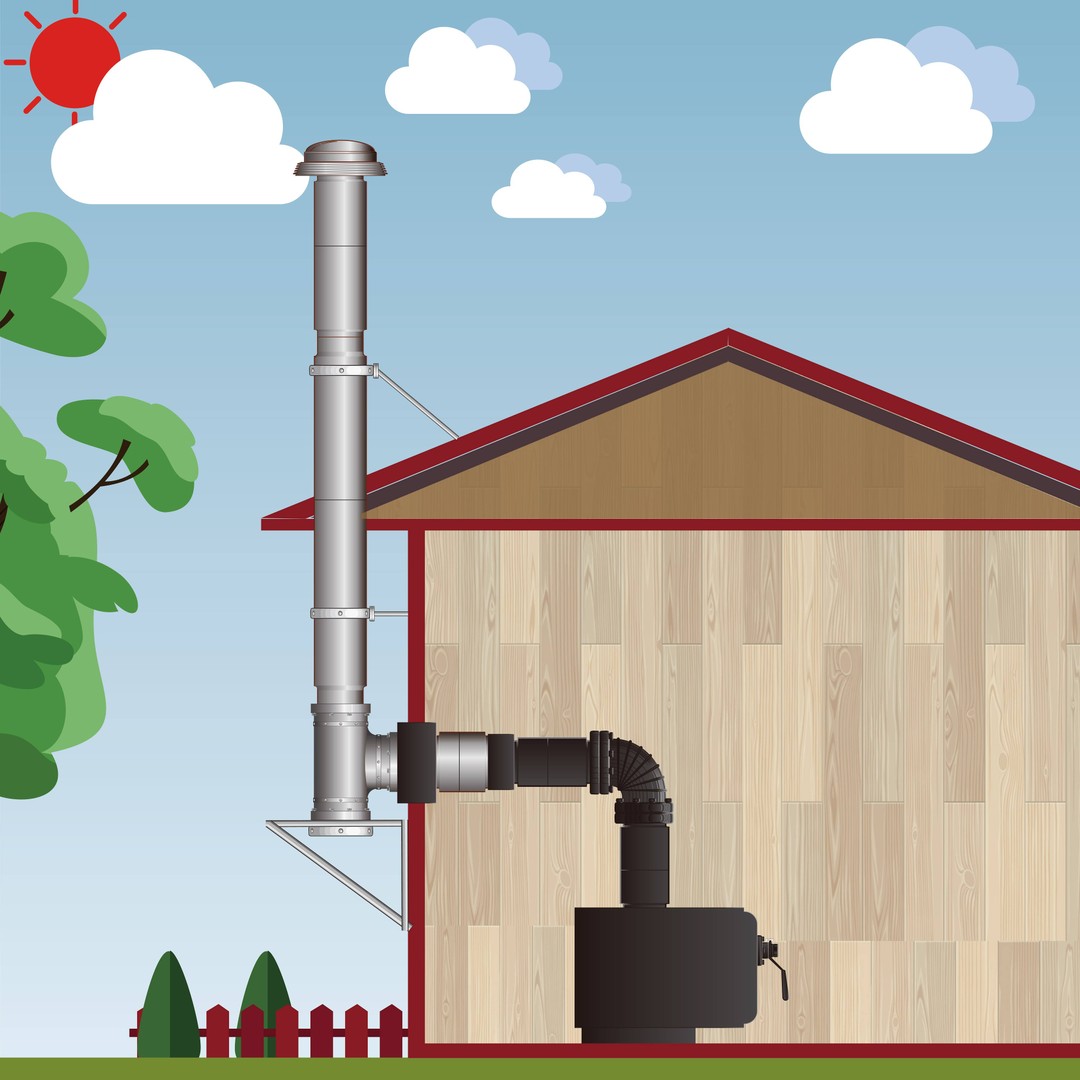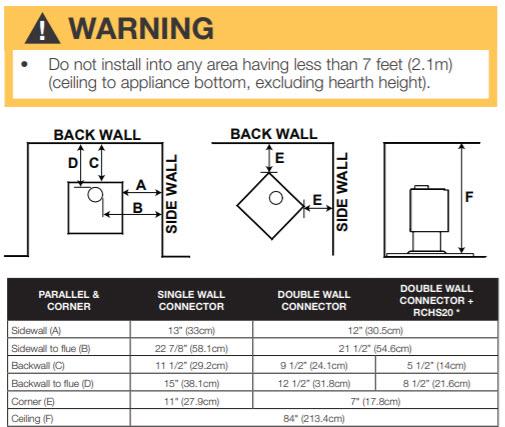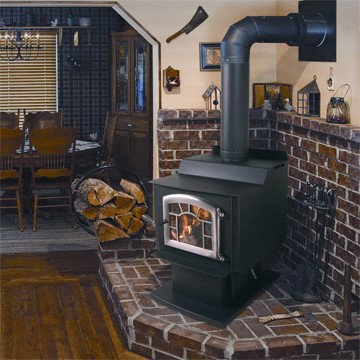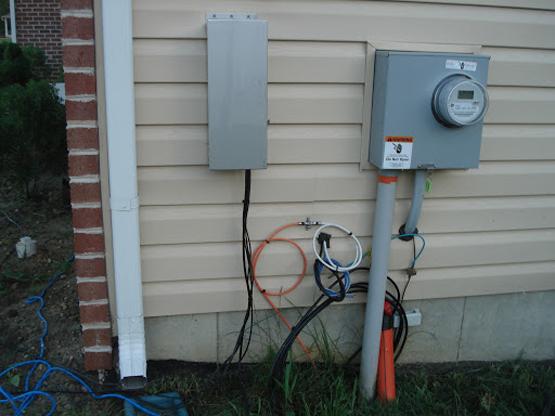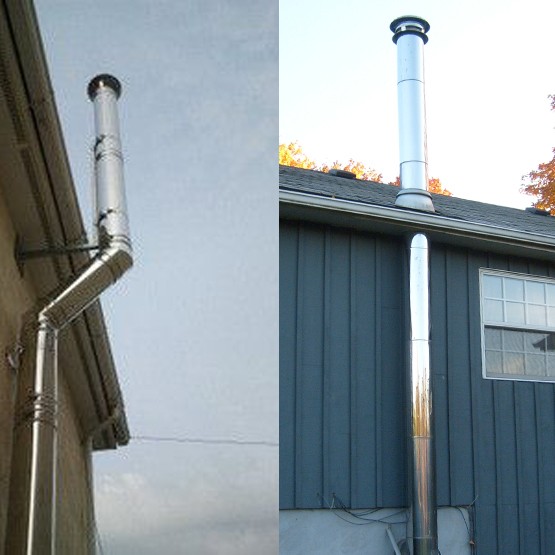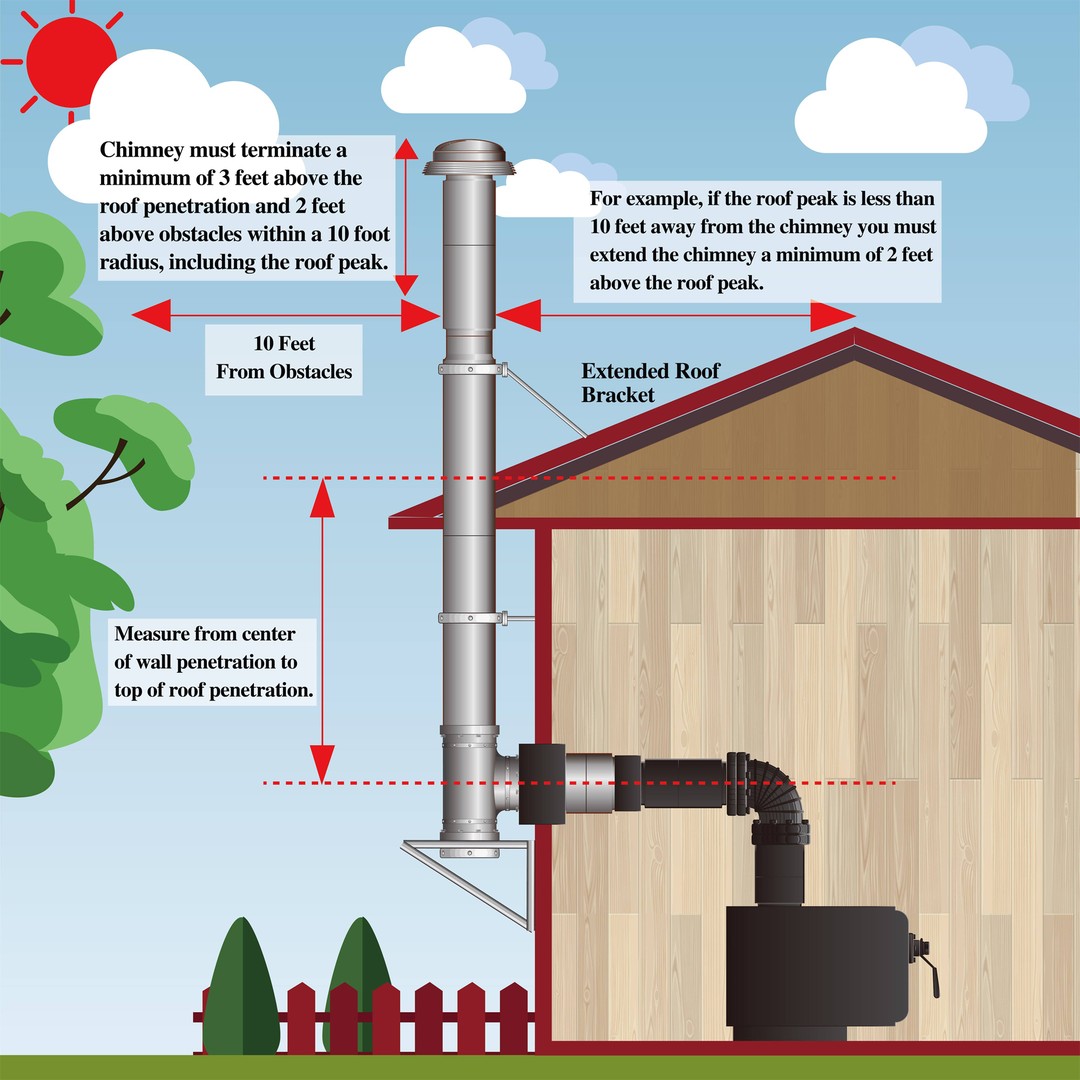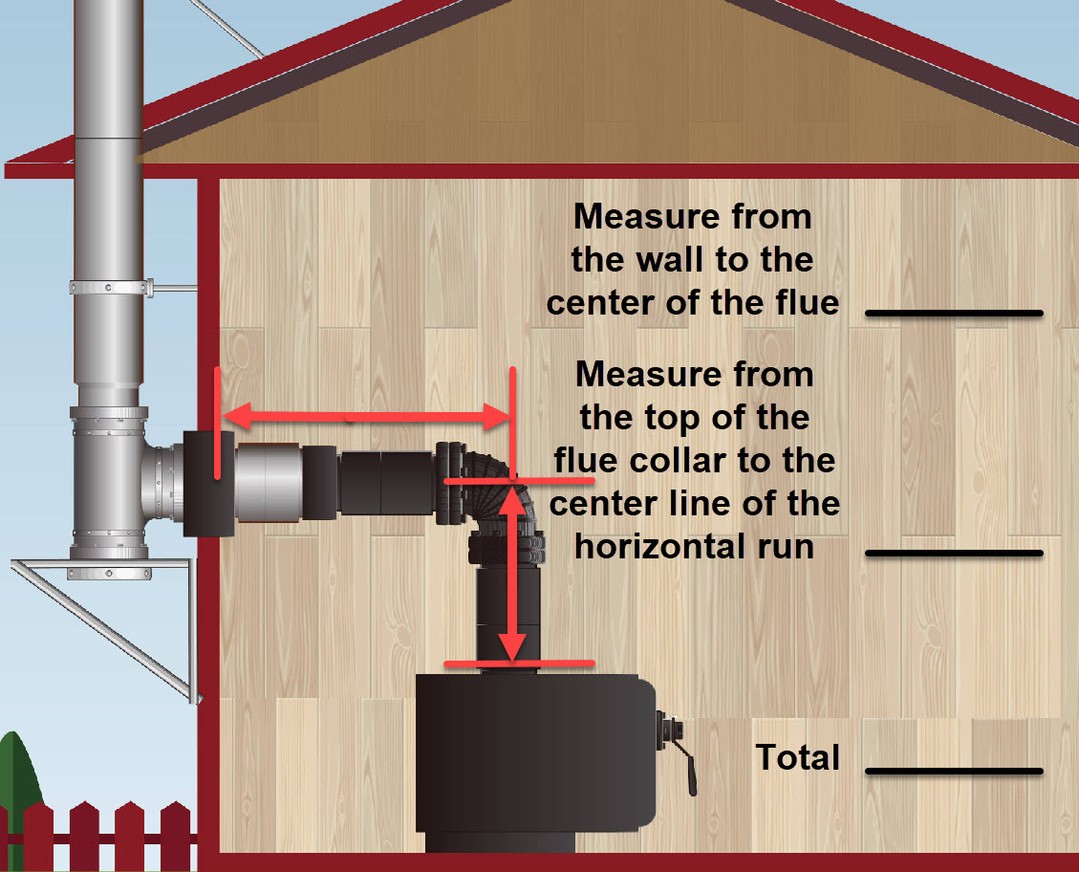Through The Wall Planning Guide
This guide will walk you through the steps to plan a Through The Wall chimney pipe installation.
Note: this guide is for educational purposes only and does not supersede the installation manual or your local building codes. Please consult with a professional chimney installer and your local code enforcement officials for specific installation requirements.
Before you begin print our PDF "How To Measure for Through The Attic Installation" and follow along.
Our Through The Wall Kit includes everything you need to safely pass our Class-A chimney pipe through the wall and above the roof.
All you need to add is the Class-A chimney pipe and the single wall stove pipe to complete the kit.
In this guide we will show you how to measure and plan your through the wall chimney installation.
The first step to installing any heating appliance, a wood stove for example, is to read the instruction manual for the appliance and pay particular attention to the required clearance to combustibles.
All heating appliances will have requirements that dictate where an appliance can be placed in a room. Things like:
- Distance from the back and side wall to the flue when parallel
- Distance from the back and side wall to the back of the wood stove when parallel
- Distance from the back wall or side wall to the corner of the wood stove when positioned in a corner
- Distance from the floor to ceiling (take note if you are installing on a hearth)
- There may be special requirements if the stove is to be installed in an alcove
- Floor protection is required if the stove is to be placed on a combustible material like carpet, vinyl, wood, etc.
Be sure to check the required clearances to walkways, doors (open and closed), windows, drapes, furniture and anything else in the area.
Single wall stove pipe requires a clearance three times the diameter of the pipe. For example a 6 inch single wall stove pipe requires 18 inches of clearance to combustible materials.
Things like fireplace mantels, walls, and ceilings can get in the way. All of this must be considered before you confirm your location for installation. Refer to your appliance owners manual for details.
It is best if you can position the appliance so it will allow the chimney to line up centered between the wall studs. Using a stud finder find the studs and mark them. You also need to punch an inspection hold in the wall to make sure there is no plumbing, electrical, or other obstructions in the wall where you plan the chimney to exit.
Once you have an idea of where you want to position your appliance walk outside and check the area where the chimney pipe will exit the wall.
Take note of the construction material on the outside of the house. Is it brick, vinyl siding, stone? Whatever it is you are going to have to cut a sizable hole in it for the Wall Thimble to pass through.
You also need to make sure there are no obstructions on the outside of the house that would interfere with the installation. Things like propane tanks, electric meters, bathroom vents, dryer vents, and other chimney's can get in the way of your installation.
Don't forget to look up. Your chimney pipe will run up the side of your house to a minimum of 3 feet above the roof. Make sure there are no obstructions in the way like windows, dormers, balcony's, overhangs, etc.
If your roof has a large overhang you have two options for installation.
1. You can use an elbow offset to go around the overhang.
2. You can penetrate the overhang keeping a vertical installation.
The general rule is to avoid elbows if possible since a totally vertical chimney is more efficient.
When you consider a through the wall installation already has two 90 degree elbows between the stove and the exterior wall adding another elbow offset at the top of the chimney can further reduce your draft causing poor performance of your appliance.
That said there are situations where adding an elbow offset is unavoidable and when it comes up you can choose between our 15 degree Elbow Kit or our 30 degree Elbow Kit.
If you choose to penetrate the overhand you will need to add a Roof Flashing, a Storm Collar, and a Firestop Radiation Shield to your kit.
While you're outside you might as well take the approximate measurements for your Class-A chimney pipe.
To do this simply measure from where the chimney pipe will exit the house up to the roof (or bottom of overhang if one exists).
Your chimney must terminate a minimum of 3 feet above the high side where the chimney penetrates the roof and a minimum of 2 feet above any obstacle within a 10 foot diameter of the chimney, including the roof itself.
This is known as the 3 foot, 10 foot, 2 foot rule.
Take a measurement to determine how much chimney pipe you will need above the roof. When in doubt it is always a good idea to make your chimney longer as a longer chimney will provide a better draft.
Write these measurements down as you will need them when ordering your chimney pipe.
Inside the house you will need to measure the single wall stove pipe.
In a through the wall installation the single wall stove pipe must extend a minimum of 24" above the stove before making the 90 degree turn to go outside. This is to ensure the stove has a proper draft.
Keep in mind that single wall stove pipe is much cheaper than Class-A chimney, so it is recommended to run the chimney not only 24" above the stove, but as high up as you can before exiting the house. This gives you more stove pipe inside the house which will throw off a lot of heat but also provide a better draft and saves you money.
Determine how high you want to run the stove pipe above your stove and then measure the distance from the flue collar on the stove to the center line of the horizontal run. Then measure from the center of the flue collar to the wall.

